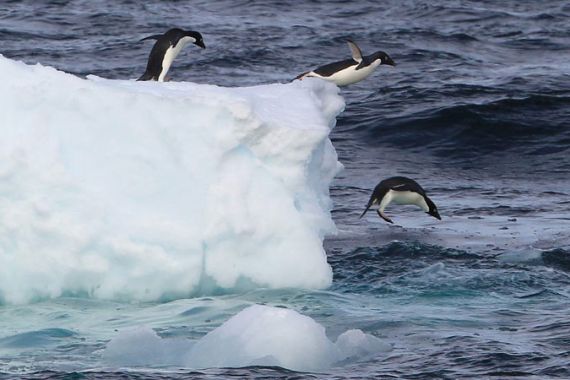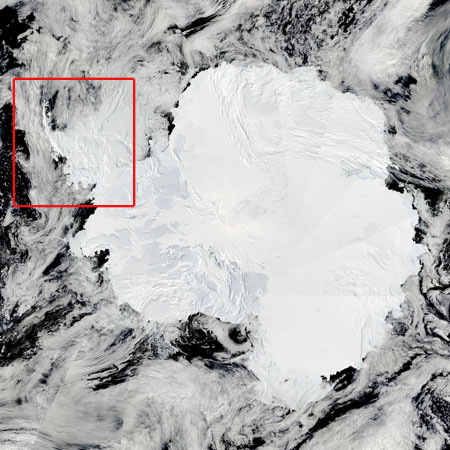Melting in Antarctica is worst in 1,000 years
The amount of ice melting on the Antarctic Peninsula has increased dramatically in recent decades.

For the first time, scientists have managed to demonstrate that ten times more ice melts in the summer months on the Antarctic Peninsula now than it did 600 years ago.
 |
| Antarctic, with the Antarctic Peninsula highlighted. [NASA] |
The Antarctic Peninsula is the biggest and most prominent peninsula in Antarctica. It consists of a rugged mountain chain, which rises more than 2000 m high.
Unlike the majority of the continent, the ice on the peninsula experiences a degree of melting every summer. Over recent decades the amount of ice which has melted has been increasing.
Keep reading
list of 4 itemsLost Futures
Photos: Greek valley that became a lake stirs drought debate
Botswana threatens to send 20,000 elephants to Germany
It has been known for some time that temperatures across the Antarctic Peninsula have risen dramatically. Over the past fifty years there has been an increase of 2.8C, making this the most rapidly warming region in the Southern Hemisphere. This is over five times the global average and comparable to rapidly warming regions of the Arctic.
At the same time, around 25,000 km2 of ice have been lost from ten floating ice shelves on the Antarctic Peninsula. This is particularly significant as it takes a long time to replenish snow and ice in this part of the world.
With under 250 mm of precipitation per year, Antarctica is officially classed as a desert. In fact, some parts of the continent haven’t seen any rain or snow for many years. Across the Antarctic Peninsula, the snow and ice simply melts and refreezes. Currently the ice that is lost to melting far exceeds that which is replenished in a year.
The latest research, a joint project by the Australian National University and the British Antarctic Survery and published in Nature Geoscience, looks at a 364 m ice core, which was extracted from the northern tip of the peninsula. Visible layers of this tube of ice show where the ice melted, then refroze. By measuring the thickness of the layers and analysing the gases contained in the ice, researchers were able to determine the changes in temperatures in the region over the last 1,000 years.
The ice core demonstrated that the current level of melting was unprecedented in the last 1,000 years, and ten times more than it was 600 years ago.
The climate of Antarctica is hugely complex. Although there are record levels of glacier and ice melting, there also appears to be an increase in the sea ice in the surrounding waters.
Just seven months ago satellites captured images of more ice floating around the continent than at any other time in history.
The increase in sea ice is thought to be caused by the increased amounts of melting ice. This melted ice runs into the sea, but does not mix with the water already in the ocean. Instead the water forms a separate, colder, layer on the surface of the ocean. This can protect sea ice from coming into contact with the warmer seas below and therefore prevent it melting.
It is also thought that a change in wind direction could have increased the extent of sea ice. Winds can both physically moving the ice, and can cause the sea surface to warm or cool. The increase in sea ice is not uniform around the Antarctic coast line, therefore the winds are also likely to have had some effect.
With the complex climate of Antarctica, and the uncertainty of the future of the climate, it is difficult to predict what this latest study means for the continent.
It is believed that the continent will continue to warm rapidly, particularly in summer, increasing the vulnerability of the delicate ecosystem of the continent.
The global significance of this is difficult to assess. However, the warming of the Antarctic Peninsula is amongst the highest seen anywhere on Earth in recent times, and is a reminder of the rationality of climate change that can be expected in the future.